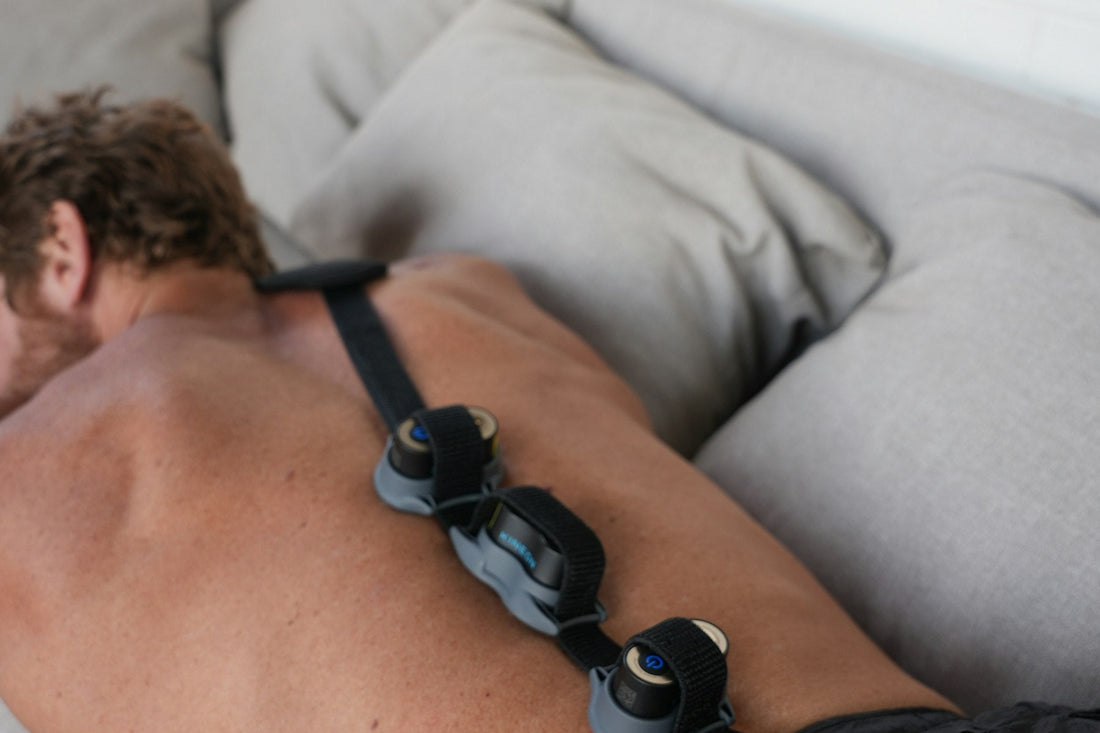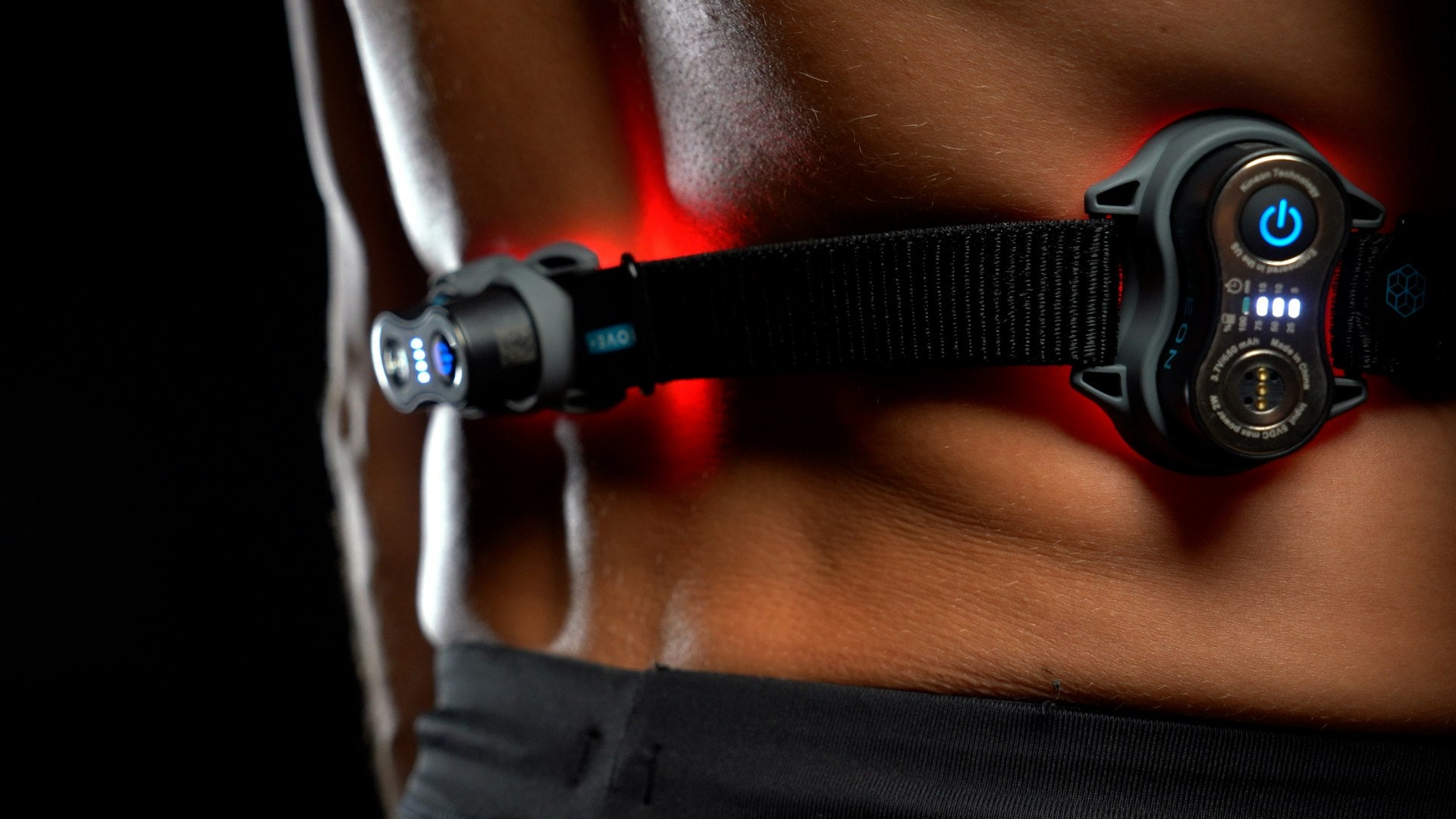
Using Red Light Therapy After Back Surgery
Share
Realizing that you’ve injured your back can be one of the most annoying moments and this is heightened when surgery is required.
With the back being the center of the body, helping us to move, bend over, rotate, walk, and stand up straight, any damage can feel like a significant impact. Especially as a substantial injury requires time away from work and doing what you love, with a need to rest and recover instead.
If this has become a reality for you, know that you’re not alone and there are measures to improve your quality of life post-surgery. Analysts in the United States estimate that 1.52 million spinal procedures will be performed throughout 2024.
If you’re one of the 1.52 million who are undergoing back surgery this year or beyond, here’s everything you need to know about using red light therapy after back surgery.
What Science Says About Back Rehabilitation with Red Light Therapy
The use of red light therapy has seen a recent boom in users for a wide range of reasons spanning from collagen-boosting effects of the skin to athletes using it for muscle recovery.
While more research needs to be done to understand the direct relationship with back rehabilitation, many studies have been completed for other areas of the body.
As a whole, scientists have found it to be successful for post-surgery recovery because of its accelerated healing abilities, along with some much-needed relief from pain.
Studies have found this form of therapy has helped to reduce pain and swelling in patients who have undergone knee surgery. Another study highlights the improvement of healing for those who had Achilles tendon repair surgery.
Red light therapy could be used to heal scar tissue too. A study from 2021 found that LED red light phototherapy is safe to use in the early postoperative period and may reduce scarring. At certain fluences, the treated scars showed greater improvements in observer rating and scar pliability, reflected by greater reductions in induration, from baseline to 6 months compared to the control scars.
How To Use Red Light Therapy On Your Back After Surgery
From panels to beds, there are different variants of red light therapy tools. At Kineon, our device is completely wireless, portable, and works with extended straps to fit around your back. It’s pretty easy to work too.
Once the MOVE+ Pro has been delivered, you’ll receive a manual with all the guidance you need to get started. Remember: we’re always here to support you on your recovery journey.
We have various resources on our website and social channels and run a private Facebook group for people worldwide to support others on their individual road to recovery.
To begin red light therapy treatment, simply adjust the strap around your back (the extender strap will be needed) and click the 3 modules in place.
Then, press and hold the power button to choose a treatment time (between 5 - 15 mins).
Once completed, the device will vibrate and you’ll have successfully done your red light therapy session at home.
Are There Any Risks Associated With RLT After Back Surgery?

The benefits of using red light after surgeries are well documented and are supported by research papers from professional medical associations and academic institutions.
While the benefits are plentiful, there are no known risks associated with the use of this technology. It’s non-invasive and doesn’t hurt when applied. This means it can be used consistently and frequently to reap the rewards.
It is worth remembering though that although this is an incredible tool, it’s not enough just to use the device on its own - especially with a major surgery like a spinal procedure. Your doctor should give instructions for post-op care, along with recommended exercises.
Combining the use of red light therapy with doctor’s orders (and a physio if one has been suggested!) will help you see the greatest results.
What’s the Normal Recovery Process Like?
The normal recovery process for back surgery depends on the type of procedure as this could range from a spinal fusion, spinal decompression, intervertebral disc arthroplasty, microdiscectomy, or a laminectomy.
Generally, after surgery, you can expect to feel sore and stiff and may find difficulties with sitting or standing straight after the operation.
Your doctor should give you a full recovery plan. They may suggest going for a short walk the day after surgery as movement can speed up the recovery process and you might be allowed home one to four days after the operation.
Pain will likely be felt in the back so your doctor can provide pain relief to help you move around and feel more comfortable.
If you have non-dissolvable stitches or staples, these will be removed roughly 5 to 10 days after the surgery. This should be done by your medical provider.
After this, you may be prescribed pain relief and a plan from a physiotherapist.
Recovery is different for everyone so don’t feel disheartened if it begins to feel like a lengthy process. Keep in contact with your doctor if needed and carry out the light exercises that your physio recommends.
How long does it take to heal after back surgery?
It may differ depending on what operation you have undergone and the severity of the condition, but most result in needing 4 to 6 weeks for you to reach your expected level of function and mobility.
It could take up to 6 months or even a year before your back is completely healed.
Anything strenuous is often advised against, but if your job involves light physical activity you could be back working within 3 to 6 months.
To help ease the pain during this process or to perhaps speed up the recovery, consider the use of red light therapy as its wavelengths can penetrate beneath the skin to speed up the body’s natural self-healing process.
It does this by first triggering the release of nitric oxide which dilates blood vessels, increasing the circulation of blood and decreasing inflammation in the joint. The wavelengths stimulate the cells’ powerhouse known as the mitochondria.
With energy production ramped up, more oxygen and nutrients can be delivered to the damaged area. This results in the repair of damaged tissues through the use of stimulating cellular function and boosting production in the cells.
Tips For Treating Your Back With Red Light Therapy After Surgery
As long as your doctor hasn’t said otherwise, you can start using red light therapy as soon as you get home from the hospital - even if you’re in a resting period as this will give your body a head-start on the healing process.
The biggest tip for treating your back with red light therapy after surgery is to use the device consistently. It’s not uncommon for people to feel some pain relief after the first use, but you mustn't stop there.
Continue to use the device regularly to feel prolonged benefits. We recommend that you use our device for at least 10-15 minutes per day. You could do this whilst watching TV, settling down for bed, or even when you’re eating breakfast. You don’t need to hold the MOVE+ Pro as it’ll be strapped around your back so you can continue with your usual tasks.
Pick whichever time works best for your schedule and use it every day for 4-6 weeks.
We’ve outlined 13 common mistakes to avoid with red light therapy in our blog post here.
Benefits Of Red Light Therapy After Back Surgery
The interest in red light therapy has certainly risen over the last few years, but it’s not a new phenomenon. Over 6000 studies have been published on the efficacy of red light therapy for treating numerous medical conditions.
Reduced Inflammation
Red light therapy promotes anti-inflammatory effects which lower oxidative stress, increase local circulation, inhibit inflammatory cytokines, and block prostaglandin production. This is a major plus as swelling can be a significant contributor to pain and lack of mobility.
Increased Healing
The light energy triggers cellular changes that accelerate the body’s natural healing mechanisms and act as a way to speed this up.
Red light is shown to enhance tissue regeneration, collagen remodeling, angiogenesis, and nerve healing.
Pain Relief
A key benefit of red light therapy after back surgery is the pain relief it can provide. This is due to its ability to improve local blood circulation and reduce swelling and nerve irritation.
It also blocks pain signal transmission through two actions: it alters nerve cell membrane permeability to sodium ions and it modifies nerve thresholds, making nerves less excitable to pain stimuli.
It stimulates the release of endogenous opioids and endorphins which have natural analgesic properties too.
With red light therapy, the secret is to be consistent as the effects become longer lasting and cumulative with multiple sessions.
Customers of our red light therapy device - the MOVE+ Pro - report an 80% reduction in pain within 1-4 weeks.
Why Choose A Kineon Device?

Born in 2019 out of our founder’s first-hand experience with chronic pain, the Kineon MOVE+ Pro has been made by people like you, for people like you.
We know what it’s like to have your life inhibited by frustrating pain. That’s why we want to help.
Our technology is trusted by top health experts and professional athletes, you can see all our ambassadors and partners here.
We also incorporate both LED lights and medical-grade laser technology which combined can offer targeted relief by increasing blood flow and energy production (ATP) in the cells of the targeted area.
This has been based on hundreds of successful clinical trials to ensure only the most effective wavelengths, dosage, and components are used.
We’ll never leave you questioning either, as we provide you with all the information you need and even have a private Facebook group where you can talk with people who are going through similar situations.
The MOVE+ Pro is available to purchase with a risk-free 30 day at-home trial.
For more articles on, red light therapy after surgery, read:
